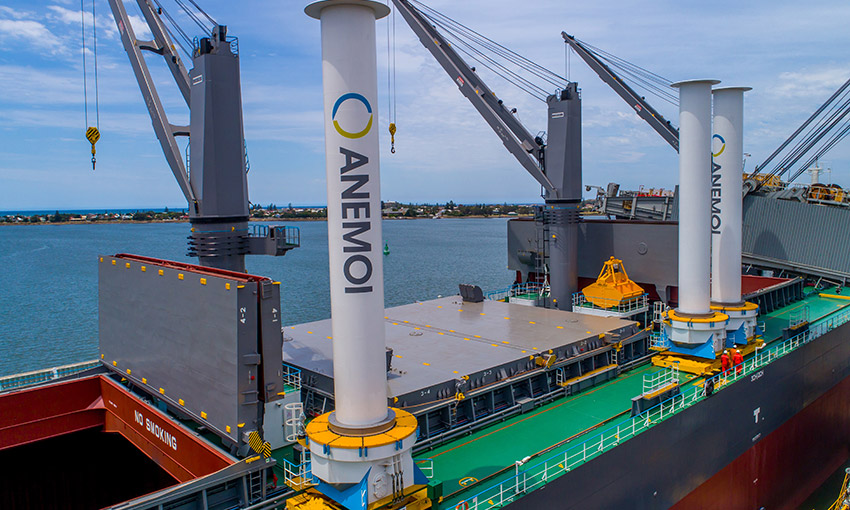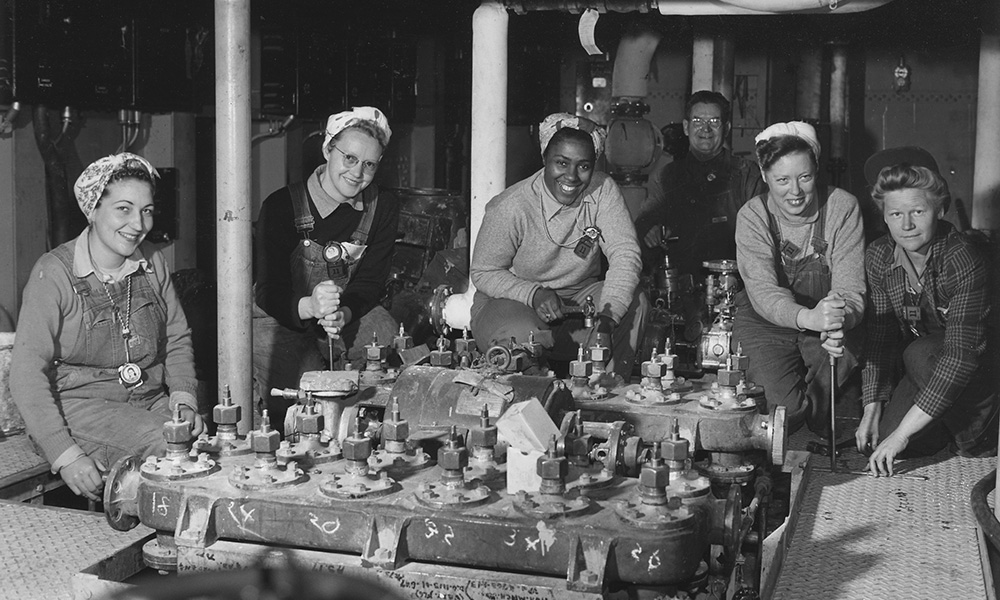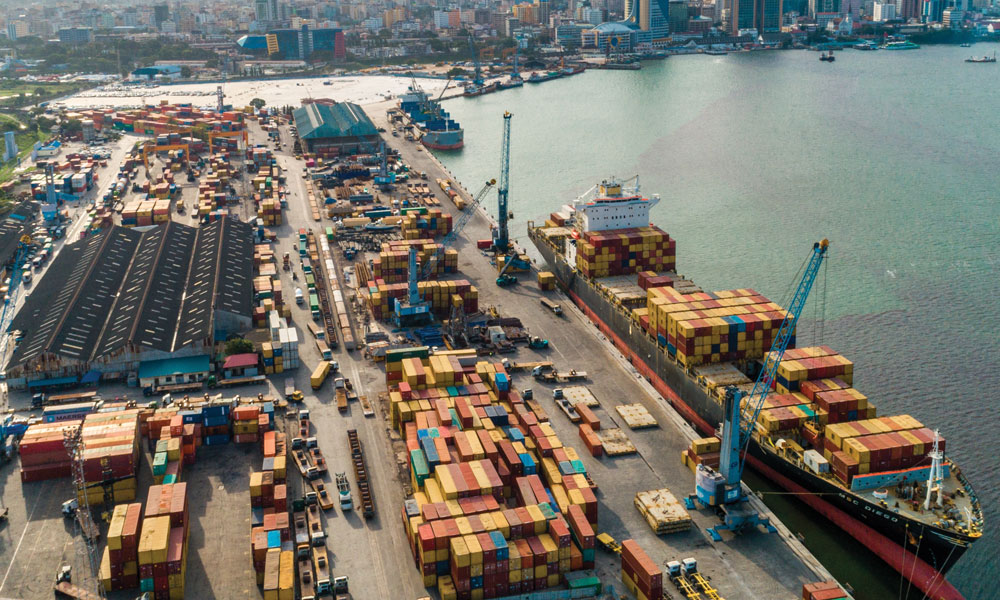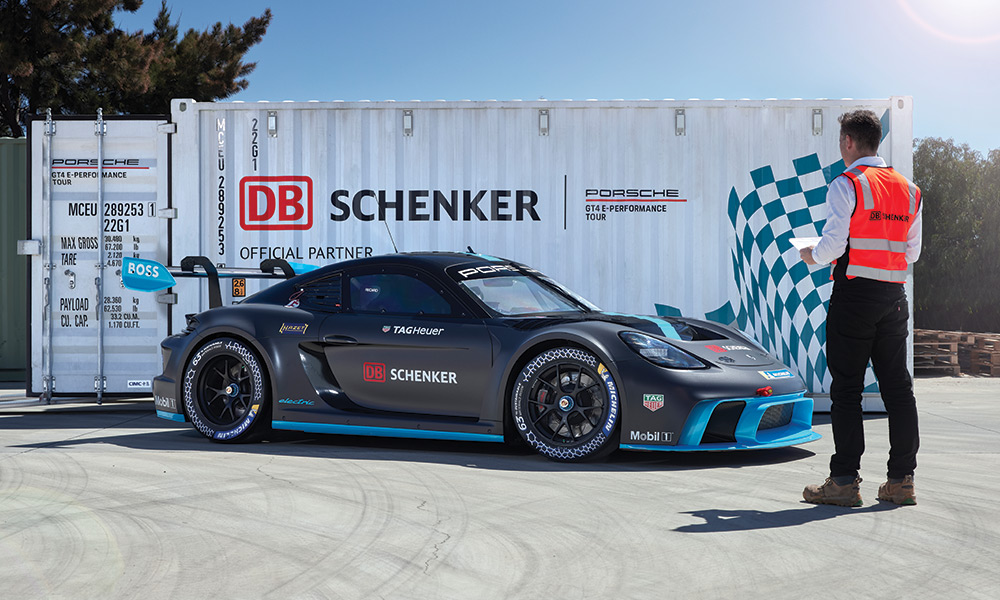What is the history of rotor sails on vessels?
Rotor sails were first installed on a vessel over a century ago, and although [German engineer] Anton Flettner proved his concept at the time, they didn’t take off due to the low cost and readily available fuel. Of course, the environment was not taken into account back then.
Anemoi engineers realised the potential of this fascinating technology and have reimagined the solution for modern use, taking advantage of a century of advancement in materials and manufacturing methods to make the equipment cost-effective.
An aerodynamic phenomenon, known as the Magnus effect, is crucial to making rotor sails work. As the cylinder rotates within an airflow, a forward thrust force perpendicular to the apparent wind direction is created, which delivers additional thrust to the vessel. The thrust generated is able to provide additional vessel speed, or maintain vessel speed, by reducing power from the main engine.
What type of vessels can rotor sails be used on?
To maximise uptake and minimise global emissions, Anemoi engineers have worked hard to ensure the technology is suitable for the majority of vessel types and we have a deployment system to suit most needs.
As standard, our rotor sails are installed on a fixed system. This means their foundation is fixed to the deck and the rotor sails cannot be readily repositioned. The system is suitable for all vessel types, however it’s typically a good solution for ferries and ro-ro vessels where there is limited deck space, the technology will not interfere with cargo operations and air draft is not a consideration, or the rotor sails are below the height of the existing vessel air draft. For vessels with more complex cargo operations, such as bulk carriers, we recommend our rail system. This system allows the rotor sails to be moved along or across the deck when the ship is in port, ensuring minimal impact to cargo loading and unloading operations.
We also offer a folding system, which lowers the rotor sails almost to the horizontal in port using hydraulics. This option is recommended for bulk carriers, tankers, or any vessel operating on routes with air draft restrictions or with cargo handling requirements.
How many rotor sails can be installed on a ship?
Anemoi is working on several projects for bulk carriers ranging from 82,000 DWT to 388,000 DWT with three to five rotor sails per vessel.
A number of factors need to be taken into consideration when deciding how many rotor sails to install, including how the rotor sails interact with each other. If rotor sails are installed too close together, the result can be counterproductive.
Anemoi has completed extensive research in this area to ensure our rotor sails are installed in a configuration that results in the best performance.
Ship operations also need to be taken into account, for example, 10 rotor sails on one vessel would have a bigger impact on visibility, navigation and cargo handling. Instead, Anemoi has focused on developing a larger size of rotor sail – in simple terms, the bigger the sail area the higher the savings. Although there are, of course, limitations to this as well.
As with any equipment and vessel technology, it is important to find the right balance to ensure the best results without impacting safety and vessel business requirements.
How does the retrofit process for rotor sails work?
Rotor sails can be retrofitted to vessels and Anemoi provides expert supervision services throughout the integration phase. If retrofitting rotor sails, integration is planned to be conducted during a periodic survey or special survey so commercial business is not interrupted.
Rotor sails and associated equipment are delivered to the dockside for installation. Anemoi engineers are present for the full equipment installation and each rotor sail is installed in a single crane lift and connected to the foundation on the ship’s deck.
At the beginning of all our projects, Anemoi conducts a feasibility study to determine the optimal equipment layout. The configuration assessment includes the size, quantity, deployment and location of the rotor sails. Important considerations include cargo operations, available deck space, proximity to existing structures that may affect aerodynamic performance and structural arrangement of vessel deck for development of foundation structure.
Safety and regulatory considerations are at the forefront of all installations. Areas that may need addressing include compliance checks related to stability, navigation (visibility, navigation lights and radar), hazardous zones, helicopter operations and safe access on deck.
How can rotor sails help ship owners and operators meet their CII obligations?
Anemoi Rotor Sails were created to accelerate the industry’s transition to zero- emission shipping by providing auxiliary propulsion to a vessel – this maintains vessel speed but allows the main engine to be powered down, resulting in fewer emissions.
Rotor sails address new IMO environmental requirements for Carbon Intensity Indicator ratings and Energy Efficiency Existing Ship Index, which went into effect 1 January 2023 and are driving the need for the global fleet to continuously decarbonise. The ultimate goal is to reach zero-emissions in line with the UN Paris Agreement.
Anemoi’s rotor sail systems not only improve EEDI performance, but also significantly reduce fuel consumption and cost. Rotor sails are one of the most viable options to decarbonise international shipping and can be used in combination with other energy efficiency devices, new technologies and alternative fuels.
How much can these sails cut emissions, and is it enough to justify the cost of installation?
A fuel saving assessment model (FSAM), which accurately predicts fuel and emissions savings from various sizes and classes of vessel, has been carefully developed by Anemoi.
Central to the FSAM are four key data sets which are: rotor sail performance data (harvested from Anemoi’s UK test facility), vessel performance data, route data and wind data.
FSAM crunches data to simulate a huge array of historic voyages over a five-year period. This ensures results accurately reflect the wind conditions experienced on the chosen route. To make sure the net results are fair and transparent, any additional drag and increased generator usage is also included.
For a 310,000-DWT VLCC trading the Bonny-Ningbo route and fitted with five rotor sails, FSAM predicts an annual fuel and emission saving of 13.5% which equates to 1622 tonnes of fuel and 5044 tonnes of carbon saved each year.
The Liberian Registry recently awarded Anemoi an approval in principle for the rotor sail system. What does this mean for the technology?
Liberian Registry is the flag state for approximately 14% of the world’s ships. Anemoi rotor sails are available with three deployment options – fixed to the deck, a folding type, and on rails that can be moved along or across the deck. The folding and rail systems were validated on a Newcastlemax bulk carrier design from SDARI and issued an AIP by Lloyd’s Register. The Liberian Registry subsequently conducted a technical review of the documentation including energy efficiency design index (EEDI) calculations. Following this, an AIP with estimated energy efficient improvements of about 20% in terms of EEDI performance was issued.
This collaboration is a fantastic example of organisations working together to create a brighter future for the maritime industry. The Liberian Registry have demonstrated their commitment to zero- emission shipping by supporting rotor sail technology as a recognised solution.
This acknowledgement from a leading flag state paves the way for a long-standing collaboration as rotor sails become a major force in the drive towards decarbonisation in shipping.
What does the immediate future look like for rotor sails?
There are increasingly stringent expectations on the global shipping fleet to accelerate decarbonisation and align
with the temperature goals in the UN Paris agreement. With political pressure building – along with changing attitudes – is imperative that viable solutions are brought to the market for both newbuilds and for existing ships to retrofit.
The case for Anemoi’s rotor sail technology is clear as we look to make an impact. A 5-30% reduction of emissions means wind propulsion is firmly on the agenda for the maritime stakeholders.
This article appeared in the April 2023 edition of DCN Magazine





